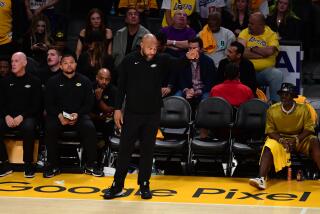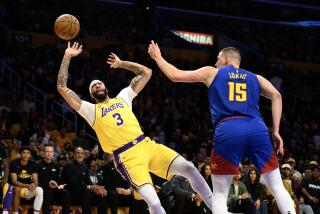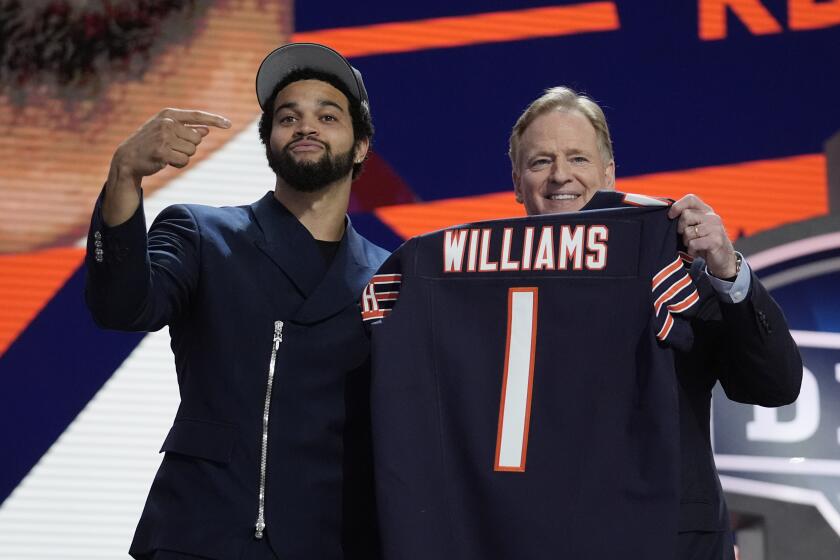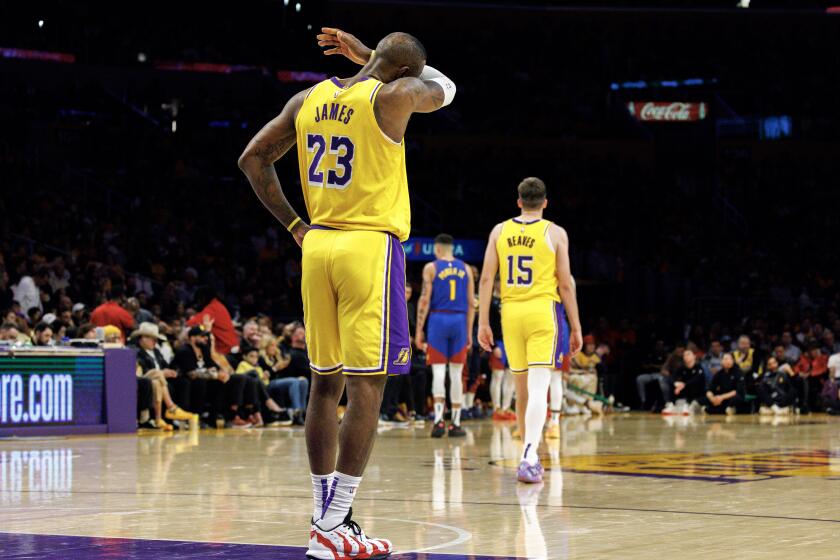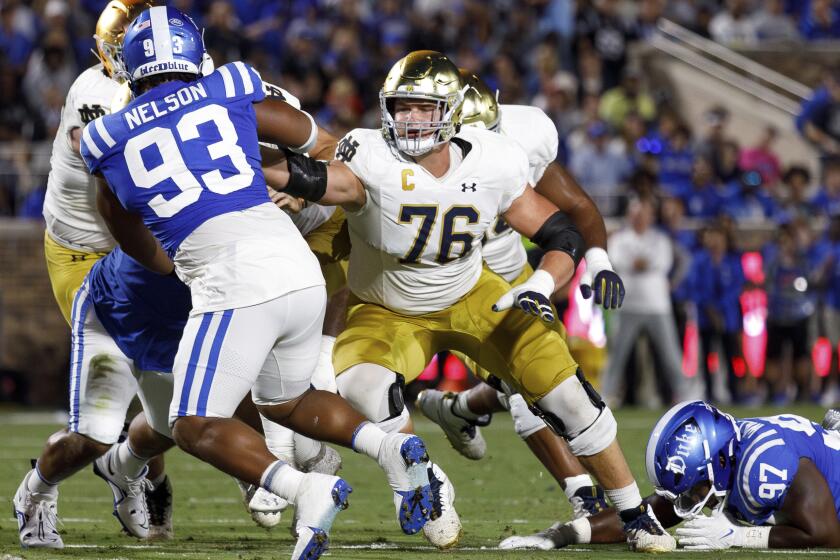The NFL concussion settlement is still breathing, and that’s too bad
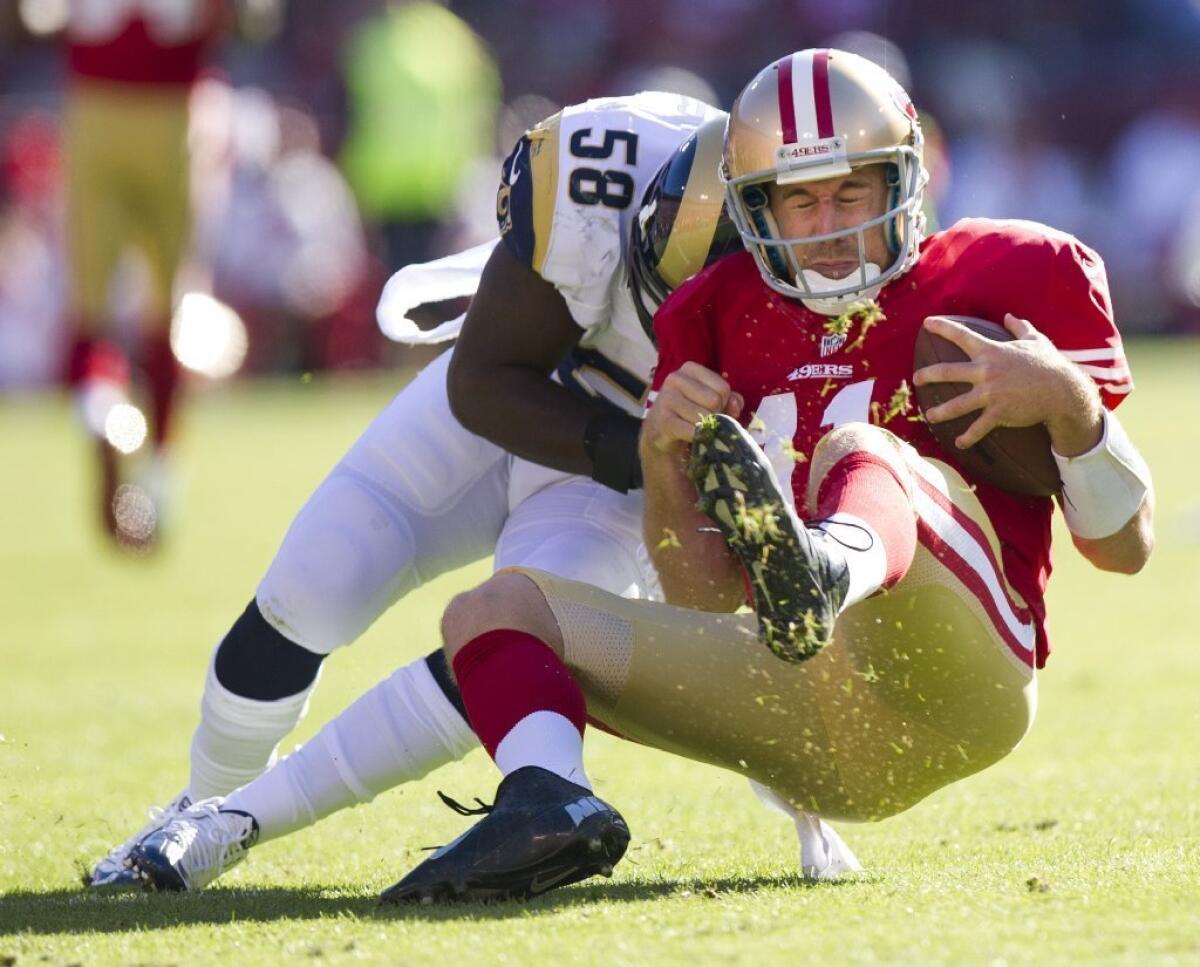
U.S. District Judge Anita B. Brody has tossed the $765-million NFL concussion settlement out of her courtroom -- temporarily -- and that’s a shame. It’s a shame because she has given the parties clues to what they need to do to make the deal acceptable, and she has set the bar way too low.
Brody’s main concern is that the money actually available to compensate former players who contract any of a roster of neurological conditions won’t be enough. The compensation fund is set at $675 million to cover 20,000 former players over a period of 65 years. For example, those diagnosed with Parkinson’s Disease will be eligible for up to $3.5 million, those with ALS (Lou Gehrig’s Disease) up to $5 million. (The rest of the settlement would cover health studies and other items.)
As Brody observed, if only 10% of the former players receive a diagnosis entitling them to compensation, it’s doubtful that the pot “would have the funds available over its lifespan to pay all claimants at these significant award levels.” She ordered the parties to produce their detailed financial analyses to prove her wrong, but plainly she’s hinting that they’ll need to come up with more money.
Leaving aside that $765 million (to be paid in over 20 years) is only 8.5% of the $9 billion in revenue the NFL collects in a single year, the size of the kitty is only one problem with the settlement.
By settling, the league bought itself a free pass on its behavior over past decades. This allegedly included systematic efforts to hide what it knew about the effects of head trauma on its players. Even if the deal is reworked to meet Brody’s objections, that information remains secret.
The settlement doesn’t cover current or future players. The families of former players who died before 2006 are left out in the cold.
There’s no question that both sides had an incentive to settle this case. The NFL risked huge damage awards, and the exposure of its actions, if it let a trial proceed for the 4,500 former-player plaintiffs. Nor was the case anything like a chip-shot field goal for the players. Brody herself hinted during hearings on the case that some of their claims might be invalid under federal labor law or the league’s collective bargaining agreement with the players union.
Then there was the question of whether any former player could prove that his condition was actually the result of injuries suffered on the pro football field as opposed to, say, play in high school or college -- or not the result of football at all.
When these uncertainties are balanced out the question remains: Did the former players get enough? Given the wealth of the National Football League and the severity of the injuries, it certainly looks as though they got taken. Brody sounds like she thinks so too, but she hasn’t gone far enough.
More to Read
Get our high school sports newsletter
Prep Rally is devoted to the SoCal high school sports experience, bringing you scores, stories and a behind-the-scenes look at what makes prep sports so popular.
You may occasionally receive promotional content from the Los Angeles Times.
